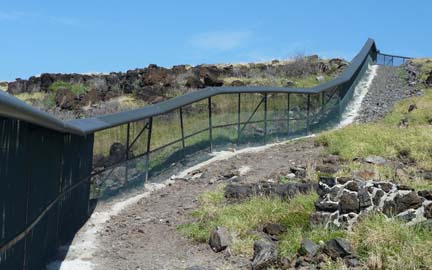When invasive species are harming the nests of ground-nesting birds, an obvious solution is to erect an exclosure. Sometimes that solution works, and sometimes it doesn’t. So just imagine the situation in Hawaii, where non-native rats and even non-native mice are part of the problem. It’s hard to keep those tiny critters out.
The American Bird Conservancy (ABC) announced recently that a 2,040-foot long, 6.5-foot-high, stainless steel fence surrounding a 59-acre wedge-tailed shearwater nesting area on O’ahu is a success. This year’s chick count is up 14 percent, and is the highest number ever recorded at the colony. The fence has been up for eight months.
Read the ABC press release for the details. Also see the press release announcing the project, which has some interesting additional information, including that the project has spirit gate in an accommodation to local belief.
This is the first time such a fence has been used in the United States, but it was developed in New Zealand, which has a similar problem with ground-nesting birds and non-native predators that range from house cats (high jumpers) to mice (can squeeze in just about anywhere).
Check out this link for more information on the New Zealand-style exclosure fencing. It may be expensive, but it seems to be effective.
You may not have Hawaiian-caliber nesting bird issues, but even adopting some aspects of this fence can offer solutions to tough exclosure problems.
Photo by George E. Wallace, ABC, used by permission.

